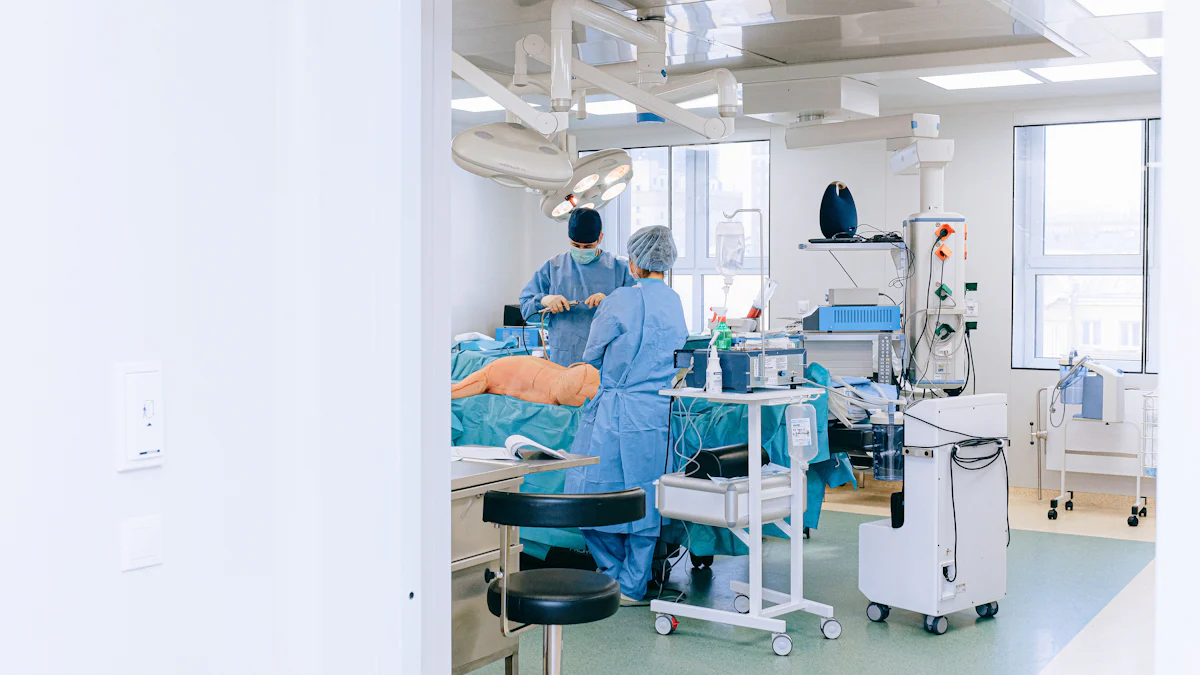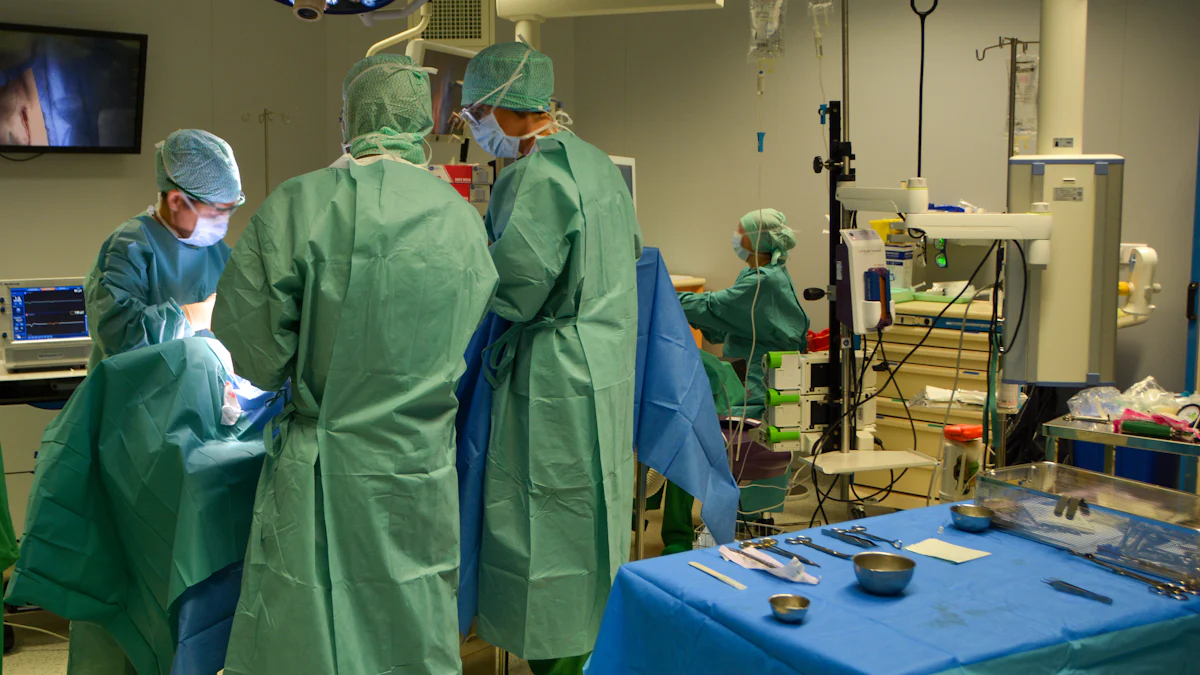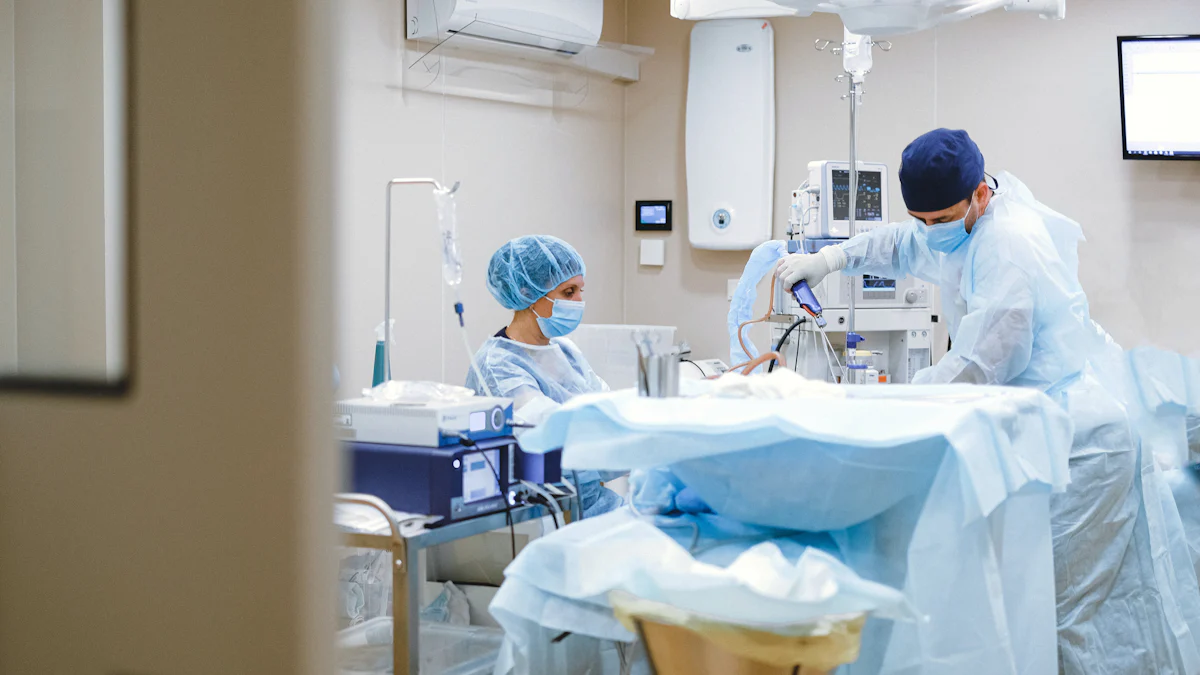
Operating room door openings significantly increase contamination risks. Each opening disrupts the sterile environment, allowing airborne particles to enter. Contamination poses serious threats to patient safety, often leading to surgical site infections. Healthcare professionals must understand these risks to implement effective solutions. High quality automatic sliding hermetic doors and automatic sliding hermetically sealed doors can help maintain sterility during procedures.
Key Takeaways
- Opening doors in the operating room raises the risk of germs. This can cause more infections at the surgery site.
- Keeping doors closed during surgeries helps keep the room clean. It also keeps patients safer.
- Training staff is important to teach them about germ risks. It helps them act in ways that keep the room safe and clean.
Contamination Risks from Operating Room Door Openings

The role of door openings in disrupting sterility
Operating rooms rely on a controlled environment to maintain sterility. When an operating room door opens, it disrupts the airflow patterns designed to keep contaminants out. Airborne particles, including dust and microorganisms, can enter the room. These particles settle on surgical instruments, surfaces, or even open wounds. Each door opening creates a pathway for unfiltered air to mix with the sterile environment, increasing the risk of contamination. Studies show that even brief openings can compromise the protective barriers established by ventilation systems.
The connection between contamination and surgical site infections (SSIs)
Contamination in operating rooms directly contributes to surgical site infections (SSIs). SSIs occur when harmful microorganisms invade a patient’s surgical wound. These infections can lead to prolonged hospital stays, additional surgeries, or even life-threatening complications. Research highlights that frequent operating room door openings correlate with higher contamination levels, which in turn elevate the risk of SSIs. Preventing unnecessary door movements can significantly reduce this risk, safeguarding patient outcomes.
Observational data on door opening frequency and its impact
Observational studies reveal that operating room doors open far more frequently than necessary during surgeries. On average, doors open 20-50 times per procedure, often for non-urgent reasons like retrieving supplies or communicating with staff outside. Each opening increases the concentration of airborne particles, undermining the sterile field. Data also suggests that higher door-opening frequencies are associated with elevated microbial loads, emphasizing the need for stricter protocols to limit unnecessary movements.
Scientific Findings on Operating Room Door Contamination
Studies on door opening frequency and airborne particle levels
Research shows that frequent operating room door openings increase airborne particle levels. Each opening allows unfiltered air to enter, carrying particles that compromise sterility. A study conducted in high-traffic surgical suites found that particle concentrations rose significantly after multiple door openings. These particles often include dust, skin cells, and microorganisms. The findings emphasize that reducing door-opening frequency can help maintain a cleaner environment during surgeries.
The effect of door opening duration and width on microbial load
The duration and width of door openings directly affect microbial contamination. Wider openings create larger pathways for airborne particles to enter. Longer durations allow more time for contaminants to infiltrate the sterile field. One study observed that doors left open for over 10 seconds resulted in a measurable increase in microbial load on nearby surfaces. Narrower and quicker openings reduced this risk. These findings highlight the importance of minimizing both the size and duration of door movements.
The relationship between staff movement and contamination
Staff movement plays a critical role in contamination risks associated with operating room doors. Frequent entries and exits disrupt airflow patterns, allowing contaminants to spread. Observational data reveals that staff often open doors for non-essential reasons, such as retrieving forgotten items. This behavior increases the risk of contamination. Training staff to limit unnecessary movements can significantly reduce these risks and improve patient safety.
Mechanisms Behind Contamination
How door openings disrupt airflow patterns
Operating rooms depend on controlled airflow to maintain sterility. Ventilation systems create positive pressure, which pushes clean air out and prevents unfiltered air from entering. When an operating room door opens, this balance is disrupted. The sudden change in pressure allows contaminated air from adjacent areas to flow into the sterile environment. This disruption weakens the protective barrier created by laminar airflow systems. Studies show that even brief door openings can cause significant turbulence, which spreads airborne particles throughout the room.
Particle dispersion and its role in spreading contaminants
Airborne particles, including dust and microorganisms, play a major role in contamination. When the airflow is disturbed, these particles become suspended and travel across the operating room. They can settle on surgical instruments, surfaces, or even the surgical site itself. Research highlights that particle dispersion increases with the frequency and duration of door openings. Staff movement further amplifies this effect by stirring up settled particles. This chain reaction creates a higher risk of contamination during procedures.
The impact of microbial load on patient safety
Microbial load refers to the concentration of microorganisms in a given area. A higher microbial load increases the likelihood of surgical site infections. Contaminants introduced through door openings contribute to this load, compromising patient safety. Harmful bacteria, such as Staphylococcus aureus, can enter the surgical field and infect open wounds. These infections often lead to prolonged recovery times and additional medical interventions. Reducing microbial load is essential for improving surgical outcomes and protecting patients.
Solutions to Minimize Contamination Risks

Reducing unnecessary door openings during surgeries
Minimizing the frequency of operating room door openings is a critical step in reducing contamination risks. Healthcare facilities can implement protocols to ensure that all necessary supplies and equipment are prepared before surgery begins. Pre-surgery checklists help staff confirm that everything required is inside the operating room. Limiting non-essential communication during procedures also reduces the need for door movements. For example, using intercom systems or digital communication tools allows staff to relay messages without physically entering or exiting the room. By addressing these factors, hospitals can maintain a more sterile environment and protect patients from potential infections.
Staff training and behavior optimization
Proper training equips staff with the knowledge to minimize contamination risks. Educational programs should emphasize the importance of maintaining sterility and the impact of unnecessary door openings. Role-specific guidelines can help staff understand their responsibilities in preserving the sterile field. For instance, circulating nurses can be trained to anticipate surgeons’ needs, reducing the need for last-minute trips outside the operating room. Regular audits and feedback sessions encourage adherence to best practices. When staff understand how their actions affect patient safety, they are more likely to adopt behaviors that support a controlled environment.
The role of laminar airflow systems in maintaining sterility
Laminar airflow systems play a vital role in maintaining sterility in operating rooms. These systems create a steady flow of filtered air that moves in a single direction, pushing contaminants away from the surgical site. When an operating room door opens, laminar airflow helps minimize the spread of airborne particles by maintaining positive pressure. Advanced systems with high-efficiency particulate air (HEPA) filters further enhance this protective barrier. Hospitals investing in these technologies can significantly reduce contamination risks, ensuring safer surgical outcomes for patients.
Operating room door openings pose significant contamination risks, jeopardizing patient safety. Scientific studies reveal how airflow disruptions and microbial load increase infection risks. Healthcare professionals can mitigate these dangers by reducing unnecessary door movements, optimizing staff behavior, and utilizing advanced airflow systems. These measures ensure a safer surgical environment and improve patient outcomes.
FAQ
What are the main risks of operating room door openings?
Operating room door openings disrupt airflow, allowing contaminants to enter. This increases airborne particle levels, microbial load, and the risk of surgical site infections, compromising patient safety.
How can hospitals reduce door-opening frequency during surgeries?
Hospitals can implement pre-surgery checklists, use intercom systems for communication, and train staff to anticipate needs. These measures minimize unnecessary door movements and maintain sterility.
Why is staff training important for reducing contamination?
Staff training ensures awareness of contamination risks and promotes adherence to protocols. Educated staff make informed decisions, reducing unnecessary movements and preserving the sterile environment during surgeries.
Post time: Feb-04-2025





